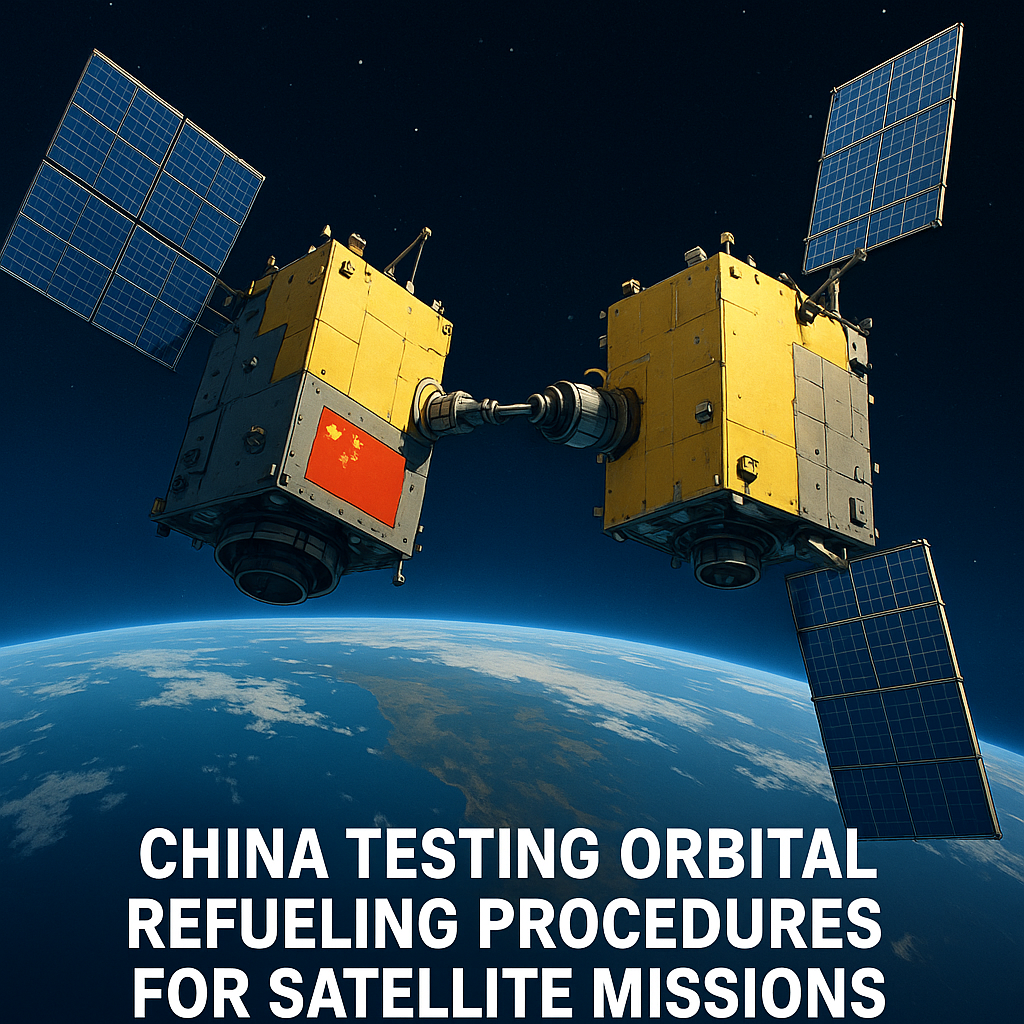China is currently conducting a very important test in space: it is trying to refuel a satellite while it is still orbiting Earth. This kind of operation is called orbital refueling, and it could help satellites stay in space and work for much longer than before.
A Big Step in Satellite Technology
The satellite doing the refueling is called Shijian-25. It was launched in January and is built especially for this job. Its mission is to test how well it can refuel another satellite while both are flying in space.
The satellite that will be refueled is named Shijian-21, which was launched earlier in October 2021. Shijian-21 had already finished its previous job: it had docked with a broken satellite called Beidou-2 G2 and moved it to a graveyard orbit. This graveyard orbit is far above the usual paths of working satellites, so old or dead satellites don’t crash into active ones.
Now, with its old mission done, Shijian-21 is being prepared for something new: a test to see if it can be refueled and used again. If this works, it could change the way we use satellites in the future.
Orbit at Breaking Point! China’s Satellite Expansion Threatens Global Space Stability
Satellites Meeting in Orbit
Both satellites were placed into low-Earth orbit on Monday. At first, they were about 900 miles apart. Over the weekend, they performed several careful movements in space to get closer to each other. These movements are called maneuvers. They help the satellites move into position without crashing or causing problems.
Experts believe that the two satellites are going to dock—or connect—on Wednesday. Once docked, Shijian-25 will try to refuel Shijian-21. The fuel being used is called hydrazine, a special type of fuel that satellites use to stay in the right path or orbit.
If everything goes well, about 313 pounds of hydrazine will be transferred. That much fuel could help Shijian-21 stay active for another eight years. That’s a very big deal, since satellites usually stop working once they run out of fuel. Refueling them while they are still in space could keep them working much longer.
There are two U.S. satellites currently watching this Chinese test. They are keeping an eye on how the Chinese satellites are moving and preparing for the docking.
This entire operation is taking place in geostationary orbit. That means the satellites are flying around the Earth at a speed that matches Earth’s rotation. Because of this, they always stay above the same spot on Earth. This is very helpful for communication, weather, and navigation satellites.
Quantum Collapse: The $100 Million Flaw That Shattered China’s ‘Unhackable’ Micius Satellite
Designed for Servicing in Space
The two Chinese satellites were created by the Shanghai Academy of Spaceflight Technology. They were specially built for testing space servicing tasks like docking, towing, and now, refueling.
Shijian-21 had earlier completed a different kind of space servicing mission. It had helped clean up space by moving a broken satellite to a safer, unused orbit. After finishing that job, it seemed like it had no fuel left. But recent movements showed it could still move—possibly thanks to the help it’s receiving now.
This test is also similar to one being planned by a U.S. company. That company is preparing to launch a satellite of its own, called a Mission Robotic Vehicle, which will also refuel and service satellites in orbit. However, China’s test is happening right now and could be one of the most important demonstrations of how space servicing might work.
This event highlights a new kind of work in space: keeping satellites alive and useful for much longer than before. If satellites can be refueled and repaired in orbit, it would mean fewer launches are needed and less space junk could be left behind.
Right now, the focus is on seeing if the Shijian-25 can successfully complete this refueling. It’s a tricky process, with many things that could go wrong. But if everything goes as planned, it will be a big step in how countries manage and maintain their satellites in orbit.




